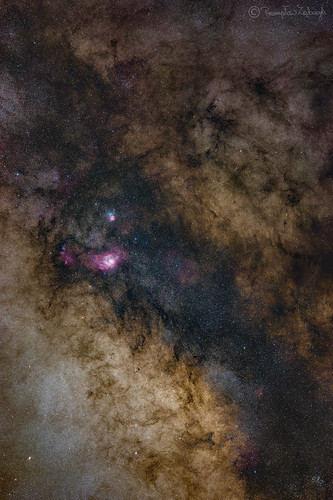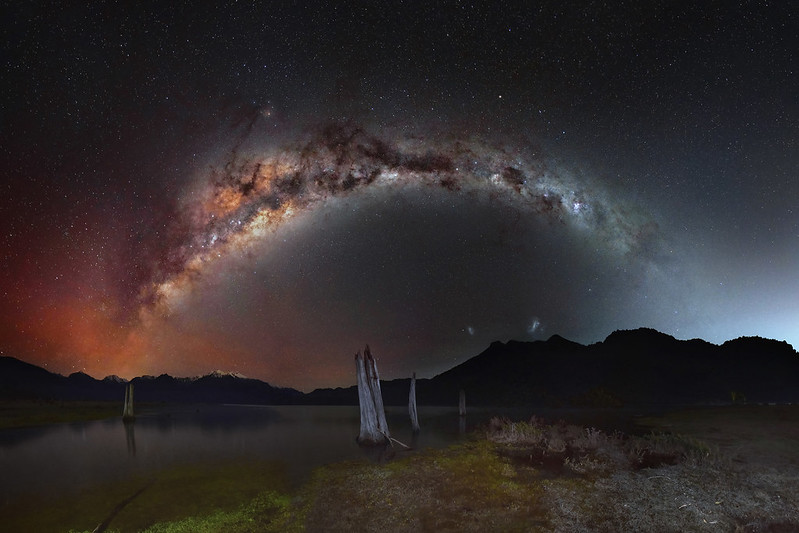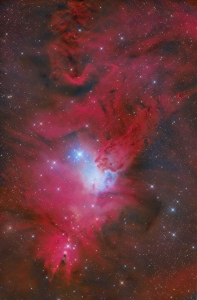
- APOD Submission: NGC7293 - Fully Resolved The Helix Nebula
I'm pleased to submit to NASA APOD and your consideration: NGC7293 - Fully Resolved The Helix Nebula, "An Eye Wide Open".
If required, please find the following link to the image in a high resolution format:
https://www.astrobin.com/e8t3hs/
Description
The beautiful bright core region of NGC7293 is home to a dying, sun-like star whose—almost—circumstellar nebulous regions have been expanding and evolving during its final phase of stellar evolution. Affectionately called, “The Helix Nebula” and “God’s Eye”, the Planetary Nebula's structure is one of the most well studied and imaged celestial bodies in the night sky.
Exploring this target using narrowband imaging techniques utilising the emission lines of Hydrogen Alpha (Ha), Oxygen III (O-III) and Sulfur II (S-II); these specific segments of the visible spectrum reveal not just the broader and intensely strong knots and large-scale emission arcs of the inner core; it also makes it possible to discover several jets, many faint bipolar outflows causing bow-shaped filaments and bow shocks, as well as successive event-lead halos.
Combining narrowband data with Red, Green and Blue (RGB) filter datasets (captured a month or two post the narrowband series) showcases the natural and softer colour tones of the inner nebulous regions of The Helix. Although minimal time was given to capturing RGB due to poor weather conditions, I plan to revisit this next season.
It has been a pleasure capturing NGC7293 and I’ve spent far too much time resolving it. As the clear nights progressed, the extra integration times has been both fortuitous and prosperous! To-date, I have not found an amateur image that fully resolves the most outer nebulous regions of The Helix Nebula - If one exists, please link me to it!
A paper tilted, “Discovery of A Halo Around The Helix Nebula NGC 7293 In The Wise All-Sky Survey” by Zhang et al proposes the existence of jets located north-east of the nebula; excitingly, the image I present here resolves not one but the existence of five jets!
As portion of time was spent capturing natural colour, RGB stars have been given priority over that of narrowband stars. This has added a colour-rich star field and the image has been presented cropped, albeit, with a wider field-of-view to honour this.
Acquisition details
Dates:
Aug. 19 - 23, 2023
Aug. 25 - 27, 2023
Sept. 6 - 10, 2023
Sept. 12 - 18, 2023
Nov. 8, 2023
Nov. 11 - 12, 2023
Frames:
Baader Blue (CMOS-Optimized) 2": 12×300″(1h)
Baader Green (CMOS-Optimized) 2": 19×300″(1h 35′)
Baader H-alpha Highspeed(f/2) Ultra-Narrowband 3.5nm (CMOS-Optimized) 2": 594×300″(49h 30′)
Baader O-III Highspeed(f/2) Ultra-Narrowband 4nm (CMOS-Optimized) 2": 155×300″(12h 55′)
Baader Red (CMOS-Optimized) 2": 19×300″(1h 35′)
Baader S-II Highspeed(f/2) Ultra-Narrowband 4nm (CMOS-Optimized) 2": 48×300″(4h)
Integration: 70h 35′
Avg. Moon age:
14.89 days
Avg. Moon phase:
24.49%
Locations: Wollongbar NSW Australia
Imaging Equipment:
Imaging Telescopes - Celestron RASA 36cm (14")
Imaging Cameras - QHYCCD QHY268M
Mount - 10Micron GM3000 HPS
Many thanks for your consideration.
Best Regards,
Rowan







